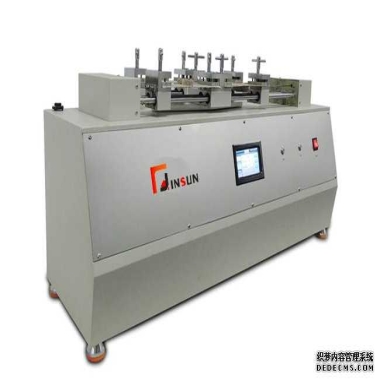ADynamic Fatigue Testing Machine is a critical piece of equipment designed to evaluate the durability and fatigue resistance of materials under cyclic loading conditions. By simulating real-world stress scenarios such as vibration, impact, and repetitive strain, this machine plays a pivotal role in ensuring product reliability across industries like automotive, aerospace, and manufacturing. Below, we explore its functionality, applications, and growing relevance in quality control.
How It Works
The tester applies periodic or random stress patterns to material specimens, mimicking the dynamic forces they encounter during service life. Key features include:
- Loading Systems: Utilizes hydraulic, electromechanical, or electromagnetic actuators to generate forces up to 1,000 kN, with frequencies ranging from 0.1 Hz to 300 Hz.
- Control Systems: Advanced models integrate closed-loop feedback to maintain precise stress amplitudes, even during high-speed testing (e.g., 100 Hz for automotive components).
- Environmental Chambers: Some testers incorporate temperature/humidity controls to assess material performance in extreme conditions, such as -70°C to 200°C.
- Data Acquisition: Sensors track strain, displacement, and crack propagation, with results visualized via S-N curves (stress vs. cycles to failure).
Compliance with standards like ASTM E466 (metal fatigue) and ISO 13320 (polymer durability) ensures globally recognized results.

Applications Across Industries
- Automotive Sector: Tests engine components, suspension springs, and chassis parts to predict lifespan under road vibration and thermal cycling.
- Aerospace Engineering: Evaluates turbine blades, wing structures, and fasteners for fatigue resistance at high altitudes and extreme temperatures.
- Biomedical Devices: Assesses the durability of stents, joint implants, and dental materials under physiological stress (e.g., 1 million loading cycles for knee replacements).
- Renewable Energy: Validates wind turbine blades and solar panel mounts against wind-induced oscillations and UV degradation.
- Consumer Electronics: Tests smartphone casings, battery packs, and wearable devices for drop resistance and flex fatigue.
Market Trends and Innovations
As industries prioritize lightweight materials and cost efficiency, the Dynamic Fatigue Testing Machine has evolved to meet new demands:
- Hybrid Testing: Combines mechanical loading with environmental simulations (e.g., corrosion, humidity) to accelerate aging processes.
- AI-Driven Analytics: Machine learning algorithms now predict failure modes by analyzing real-time data, reducing testing time by up to 50%.
- Miniaturization: Portable testers like the Instron ElectroPuls E1000 enable on-site quality checks for small components, slashing logistics costs.
- Sustainability: Eco-friendly hydraulic fluids and recycled materials in tester construction align with global carbon-neutrality goals.
Leading manufacturers, including ZwickRoell and MTS Systems, are developing IoT-enabled machines that share data via cloud platforms, enabling remote diagnostics and predictive maintenance.
In conclusion, the Dynamic Fatigue Testing Machine is indispensable for ensuring material integrity in an era of demanding performance standards. By investing in this technology, industries not only meet regulatory requirements but also gain a competitive edge through innovation and reliability. As automation and sustainability trends reshape manufacturing, this tool remains a cornerstone of progress.

